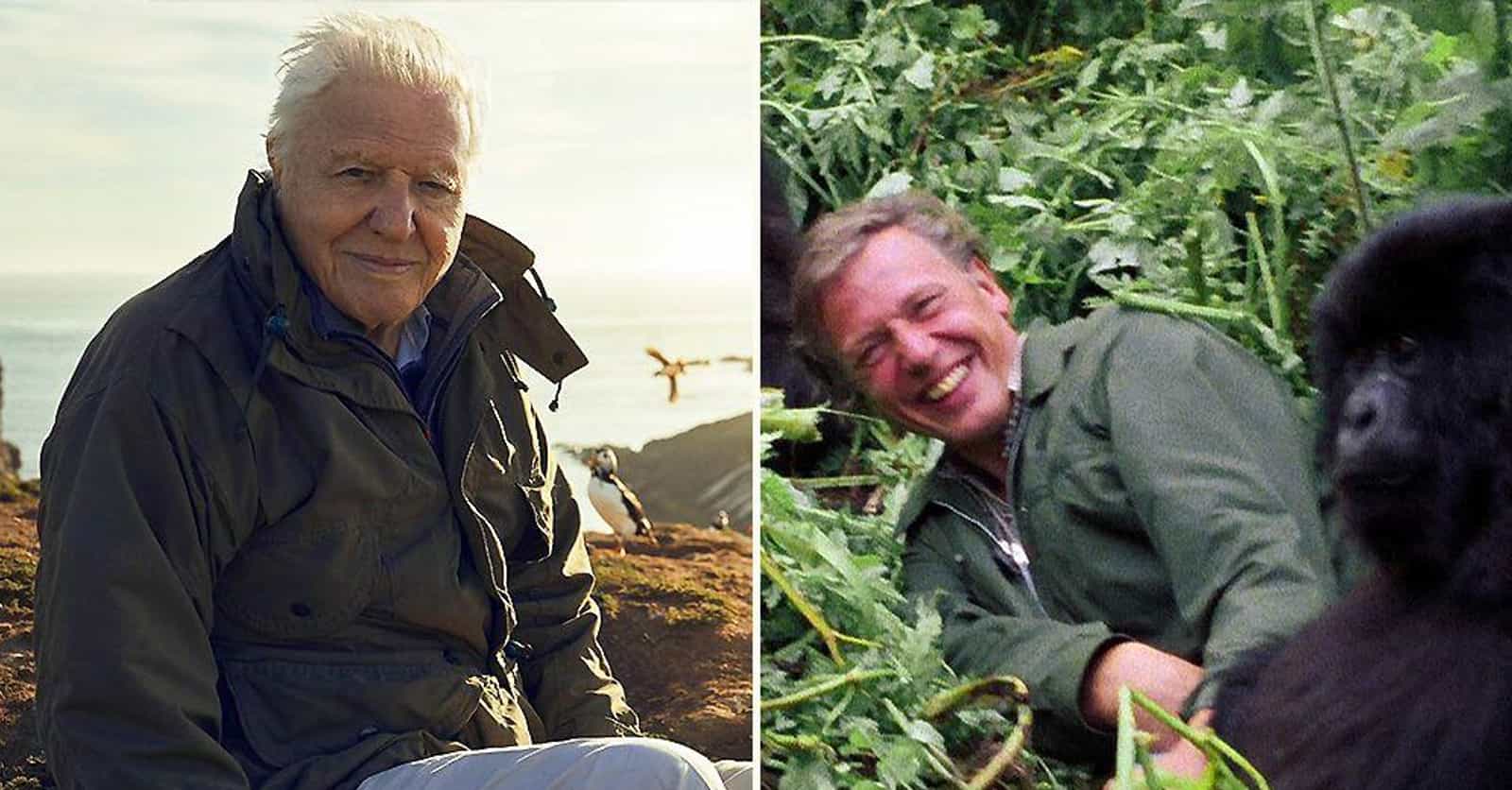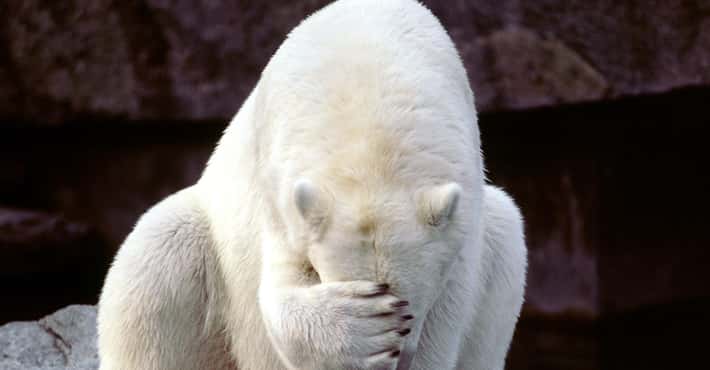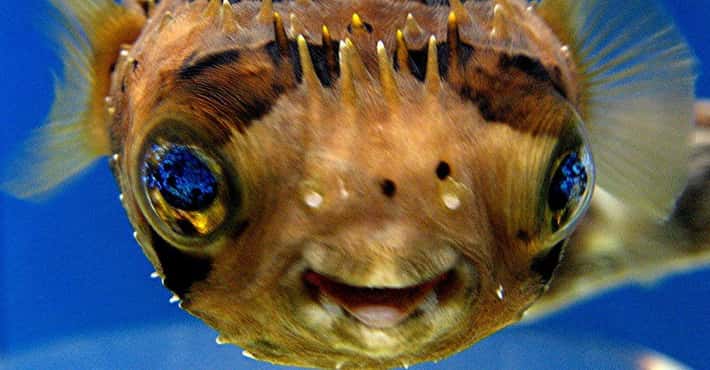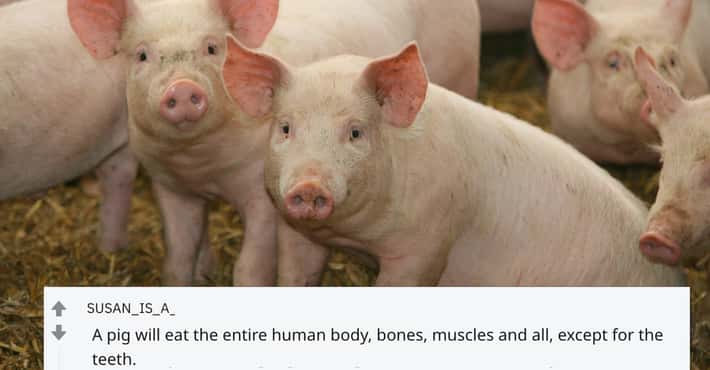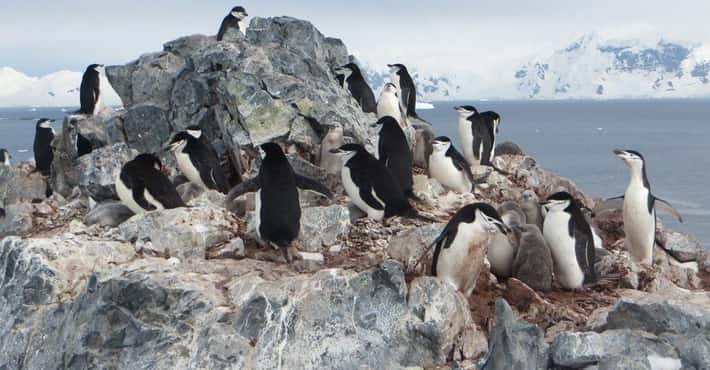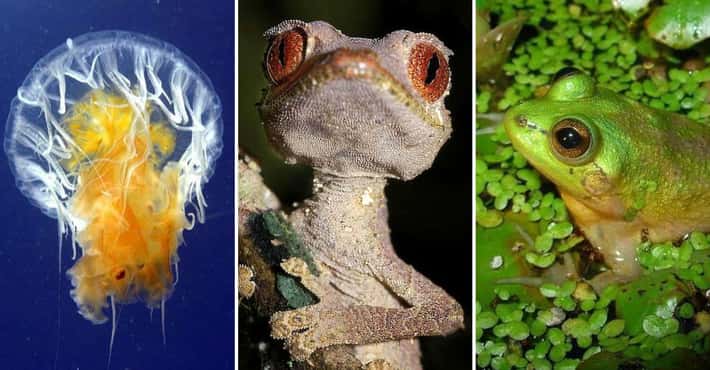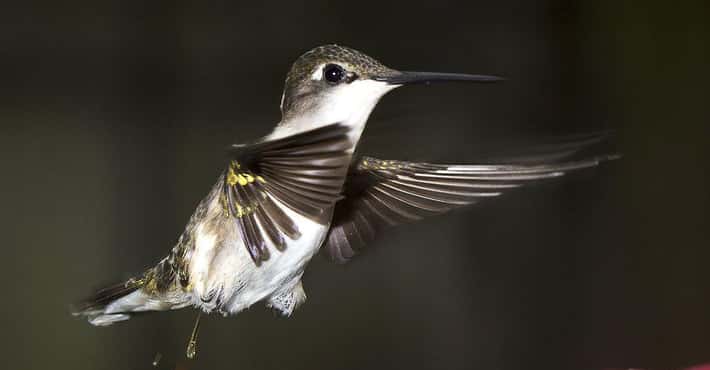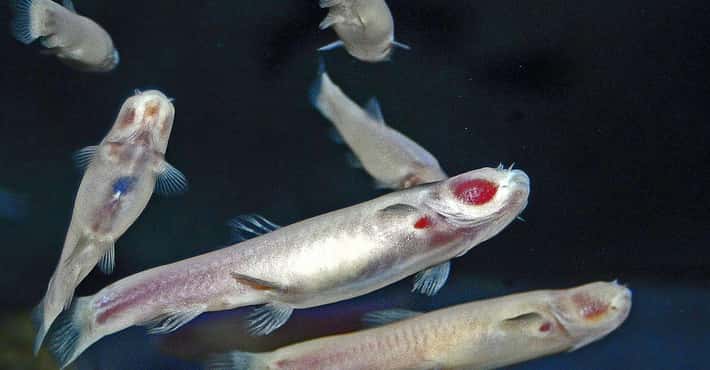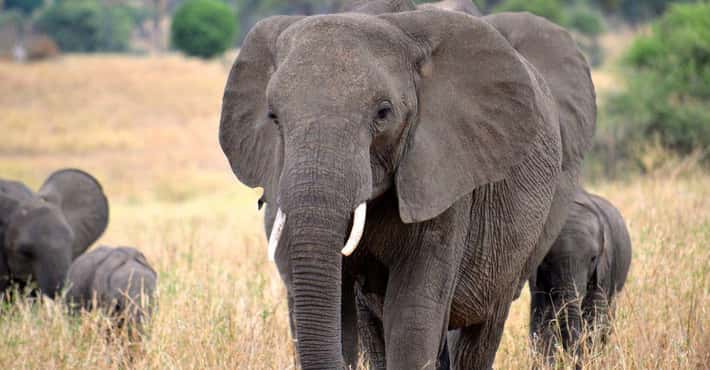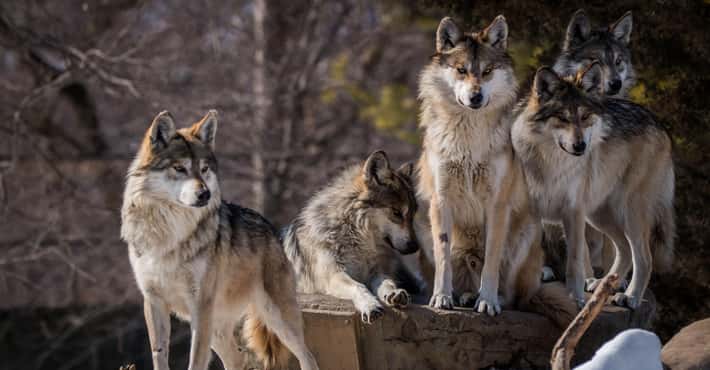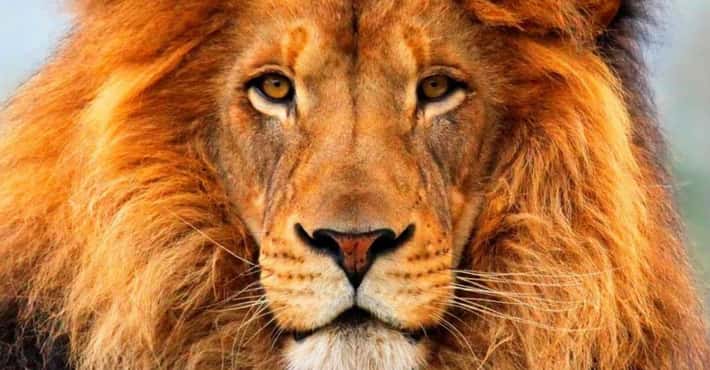Since his 1979 breakthrough documentary Life on Earth, Sir David Attenborough has brought the natural world into millions of living rooms across the world in vivid detail. Attenborough's documentaries range from surveys of Earth's ecosystems such as Our Planet to in-depth examinations of particular species as he did in The Life of Birds. In his 90s, Attenborough continues to tread new ground, giving a more intimate look into his life in David Attenborough: A Life on Our Planet. It seems that whatever Attenborough has to say, there is no shortage of people eager to listen.
Attenborough's most memorable documentaries educate not only in terms of the wildlife captured on film, but also in highlighting the effects of climate change in a world that has changed drastically since Attenborough first began filming nearly half a century ago. While some of the information in the documentaries may seem dire, Attenborough is always quick to point out that the future is very much in our control.
- 126 VOTES
Life on Earth
Photo: BBC OneDate Released: 1979
What’s Documented? Life on Earth: A Natural History by David Attenborough was Attenborough's first major documentary series and what would become the foundation of his prolific career. Throughout the 13-episode series, Attenborough describes the nature of human and animal evolution by traveling to 100 locations across the globe. The series used unprecedented filming techniques, including creating an artificial burrow to film a mole rat and filming bats in a wind tunnel to capture the flapping of their wings in slow motion. At the time, the series cost over $1 million to film and required a crew of 30 filming over three years with the help of 500 scientists.
The Big Lesson: Arguably the most unforgettable scene from Life on Earth occurs when Attenborough is studying a group of gorillas in Rwanda. As Attenborough is narrating, a female gorilla makes eye contact with him. The next day, she remembers Attenborough and begins gently grooming him. In an unscripted monologue, Attenborough describes the gentle nature of gorillas. He concludes by stating, “So it seems really very unfair that man should have chosen the gorilla to symbolize everything that is aggressive and violent, when that is the one thing that the gorilla is not - and that we are.”
- 221 VOTESPhoto: BBC One
Date Released: 2022
What’s Documented? In this five-part docuseries, 95-year-old David Attenborough returns to teach viewers about the mysterious world of plants. The Green Planet is every bit as interesting as Attenborough's series on wildlife, which might sound surprising at first, but actually makes a lot of sense. Throughout each episode, Attenborough demonstrates the way in which plants thrive and survive. For instance, the corpse flower mimics rotting flesh to attract pollinating carrion flies. There's also stunning time-lapse footage that shows tropical trees growing 32 feet in a single year as they race to the top of the rainforest canopy.
The Big Lesson: Although plants are all around us, most humans know very little about them. Attenborough states in the documentary, “We depend upon them for every mouthful of food that we eat and every lungful of air that we breathe. Plants flourish in remarkable ways. Yet, for the most part, the secrets of their world have been hidden from us. Until now.” Attenborough also points out plants' similarities to humans include the life-death cycle, fighting with neighbors, and doing whatever it takes to thrive.
- 320 VOTES
Dinosaurs: The Final Day
Photo: BBC OneDate Released: 2022
What’s Documented? In this two-part documentary, David Attenborough diverges from his usual body of work and takes viewers to the final day of the dinosaurs. Filmed at the Hell Creek Formation in North Dakota, Attenborough examines fossils that prove how an asteroid crashed into Earth and wiped out all Cretaceous dinosaurs. With stunning special effects, the viewer gets to witness the everyday life of the azhdarchid pterosaurs, Tyrannosaurus rex, and Triceratops moments before they went extinct.
The Big Lesson: The point David Attenborough drives home is how drastically the world changed in a matter of minutes when an asteroid the size of Mount Everest hit Earth 66 million years ago. Attenborough's storytelling ability makes the whole thing seem both real and recent. Attenborough explains how non-avian dinosaurs were wiped out in approximately two hours on a normal spring day. As tragic as that might seem, it is this catastrophe that brought about many of the mammals that still exist on Earth today.
- 419 VOTESPhoto: BBC One
Dates Released: 2018, 2022
What’s Documented? Both Dynasties and Dynasties II examine the complex relationships and power structures of animals that live in groups. Each episode documents a different group, whether it be chimpanzees in the Senegalese forest, Emperor Penguins, or hyenas in Zambia. In the chimpanzee episode, the alpha male David struggles to hold onto power while two lionesses lead a pride after the males abandon it. The long-form nature of each episode allows the viewer to develop a genuine bond with the animals and their struggles to survive harsh environments.
The Big Lesson: On the one hand, the Dynasties series is about how animals interact with the environment around them. "When you think of the range of this series, going from the South Pole to West Africa, the common worry is space," Attenborough said in a 2018 interview leading up to the release of Dynasties. Attenborough uses the specific example of tigers eating human children in India, which brings up the issue of humans and animals living together and the perils of encroaching on one another's territory.
On the other hand, the series drives home the point that groups of animals often face the same problems as humans do regarding keeping families together, maintaining power, and forming alliances with other groups to keep the peace.
- 519 VOTES
Trials of Life
Photo: BBC OneDate Released: 1990
What’s Documented? Attenborough's third series, Trials of Life gives a big picture look at the birth, growth, and reproduction of countless animal species. The 12-episode series begins with the Christmas Island red crab, a species 120-million strong. The series goes on to shed light on the ways different species raise their young and care for them, often as a means to survive. Attenborough gets up close and personal with wildlife ranging from sea lions to prairie dogs to termites.
The Big Lesson: Trials of Life concludes with the episode “Continuing the Line.” This final episode examines animals' need to reproduce at any cost due to the very nature of their genetic makeup. Attenborough points out that like humans, animals will endure massive hardships to provide for their young and ensure the continuation of their species. Seeing the way in which female elephants carefully choose the strongest male and how coral reefs can reproduce despite not being able to move are a testament to nature's ability to reproduce at any cost.
- Photo: Netflix
Date Released: 2020
What’s Documented? David Attenborough: A Life On Our Planet gives us insight into Attenborough's personal reflections on life and the environment. He begins in the city of Pripyat near Chernobyl and reflects on the ways in which the world has changed since he was born in 1926. The documentary takes the viewer through Attenborough's early years, including his first research expeditions in the 1950s. Through archival footage and contemporary interviews, A Life On Our Planet highlights the unusual and beautiful life Attenborough has lived and what he hopes for Earth's future.
The Big Lesson: A Life On Our Planet is far from a lighthearted documentary. Attenborough explains how 15 billion trees are cut down annually worldwide and half of the world's rainforests have been cleared among other startling facts. Attenborough asserts that humans are at a crossroads regarding climate change and that there's still hope. Attenborough envisions “re-wilding” the planet and increasing biodiversity to reverse the damage done to the planet. He also points out how countries like Costa Rica and the Netherlands have seen massive benefits from taking action against climate change. “If we take care of nature, nature will take care of us," is Attenborough's prerogative.
- 732 VOTESPhoto: Frozen Planet / BBC One
Dates Released: 2011, 2022
What’s Documented? Frozen Planet (2011) takes the viewer to the Arctic Circle and Antarctica for an in-depth look at the wildlife that coexist in these bitterly cold terrains. The 2011 documentary checks in with polar bears and emperor penguins through the four seasons to see how they navigate a calendar year in unforgiving conditions. Frozen Planet II (2022) widens the lens by looking at countries such as Russia and Greenland that are in close proximity to the Arctic. These new locations along with significant advancements in technology since the original series aired make Frozen Planet II wholly unique from what was documented a decade earlier.
The Big Lesson: Beyond documenting wildlife in these regions, the Frozen Planet series gives insight into the Inuit people and other Indigenous groups who live in and around the Arctic Circle. This not only highlights the importance of protecting Indigenous lands but shows in stark reality the effects of climate change. In fact, the seventh episode in the original series, “On Thin Ice,” wasn't going to air in the United States due to pushback from climate change deniers. Although the episode did eventually air, it opened up a larger conversation about how well human truly understand the ways in which the Earth is changing. Footage of melting ice shelves, starving polar bears, and the extinction of the Adélie penguin are more of a call to action than merely educational.
- 829 VOTESPhoto: BBC One
Dates Released: 1998
What’s Documented? In the 10-part 1998 docuseries The Life of Birds, David Attenborough's team spent three years filming in 42 countries to film the daily lives of birds on an up-close level. The series begins with how birds evolved into the flying creatures we see today and how the mechanics of flight work. The series goes on to cover such topics as diet, communication, mating, and parenting.
The Big Lesson: Attenborough explains in the documentary, “Wherever you look, you will see one. If you put down bird food they’ll start to come. Yet if you clap your hands, they will disappear into their own world. You may wish you could fly and your spirits go with them.” Additionally, there's a resounding message throughout the series as to the resilience and adaptability of birds. For instance, the sandgrouse survives in the desert by absorbing water into its feathers. Meanwhile, crows in Japan learned to thrive in the city by cracking nuts on concrete sidewalks.
- 926 VOTESPhoto: The Blue Planet / BBC One
Dates Released: 2001, 2017
What’s Documented? First released in 2001, The Blue Planet was a paradigm in documenting the mysteries of Earth's oceans. Filmmakers spent five years filming for the documentary at more than 200 filming locations. The Blue Planet also offered a firsthand look at previously unseen and unknown species of ocean life. For The Blue Planet II, filmmakers visited 39 countries to gather a stunning 6,000 hours of footage.
The Big Lesson: The Blue Planet franchise highlights how much we didn't know about ocean life in 2001 and how much we have yet to learn today. The show has been so influential that a previously unknown species of plankton was named after the series.
Beyond ocean life, the series also studied how lunar phases affect the tides and ecosystems of the ocean. Overall, the big lesson is that beyond being highly complex, the ocean is home to intelligent, determined, and oftentimes entertaining species that often go overlooked.
- 1039 VOTESPhoto: Planet Earth II / BBC One
Dates Released: 2006, 2007, 2010, 2012, 2016, 2023
What’s Documented? The Planet Earth franchise is made up of six television series and two feature films that document the world around us. In addition to providing the viewer with an immersive experience, each series offers a unique perspective on Earth. For example, in the first series from 2006, each episode examined a different world habitat or environment (mountains, deserts, forests, etc.) In the third series, Saving Planet Earth from 2007, a variety of celebrities presented film footage of various ecological disasters and their impacts on the world.
The Big Lesson: All six installments in the Planet Earth franchise and its two feature films highlight the fragility of Earth. The first episode in the original 2006 series, “From Pole to Pole,” takes a viewer on a trip around the globe that gives a crash course on climate change. Later series such as Planet Earth Live allowed viewers to witness animal life in real time for a uniquely immersive and intimate experience. The series touches on issues of science, politics, and religion, but the takeaway message is that for all the perils that the world places, it remains a jaw-droppingly beautiful place.
- 1137 VOTES
Our Planet
Photo: NetflixDates Released: 2019, 2023
What’s Documented? Netflix announced in 2015 that it would produce a massive nature docuseries. The result was Our Planet, an eight-part series that documented eight unique ecosystems from South America to Africa to the Arctic and beyond. It took four years and a crew of 600 people to make the series happen. Our Planet looks at nature on a big scale and up close, documenting everything from caribou herds seeking shelter from harsh winters to a bee pollinating an orchid.
The Big Lesson: Both Our Planet and Our Planet II offer some of the highest quality footage ever seen of wildlife. However, the beautiful and picturesque images of animals and landscapes are shattered by the devastating realities of the Earth's current ecological state. The stunning herd of caribou is 70% smaller than it was two decades ago according to Attenborough. Footage from the documentary also shows a 75 million-ton ice sheet crashing into the ocean off Greenland. Sobering footage of a palm tree oil plantation in Borneo is juxtaposed to the magnificent jungle it used to be. While Attenborough regularly talks about the devastating effects of climate change, it's a very different thing to see it happen in real time.
- 1223 VOTES
Seven Worlds, One Planet
Photo: BBC OneDate Released: 2019
What’s Documented? In Seven Worlds, One Planet, David Attenborough takes the viewer back to Pangea and explains how Earth's seven continents splintered off from each other to create rich and diverse wildlife. Each episode in the series focuses on a different continent in intense detail. In fact, it took 1,500 people to make the series, which was filmed over the course of 1,794 days across 41 countries. The series also took advantage of cutting-edge drone technology to get a closer look than ever before at rare species. However, filmmakers got up close and personal in many instances, including swimming with over 1,000 species of cichlid fish in Africa's Rift Valley.
The Big Lesson: Seven Worlds, One Planet hones in on the personalities of unusual and unexpected animals. For example, the episode on Europe travels to a graveyard in Vienna that's home to wild hamsters. These quirky animals use candle wax and flowers left at gravesites as their food. Producer Kiri Cashell said of the animals in an interview, “You get to know them, they’re like people, they each have completely different personalities.” So while the series looks at the big picture of wildlife across the world, it's really the individual animals that are the real “stars.” This intimate look at wildlife offers a more personal experience for the viewer not always found in other documentaries.
- 1323 VOTES
The Living Planet
Photo: BBC OneDate Released: 1984
What’s Documented? The Living Planet was Attenborough's second documentary series following the immense success of Life on Earth. In this 12-episode series, Attenborough and his team traveled to some of the most remote and volatile parts of the world. Notable sites include the Sudan, which had no runways or roads; the Himalayas, which could only be reached on foot; and one of the earliest known human villages located in Jordan. New technology included a scuba diving suit that allowed Attenborough to be speak and be filmed underwater.
The Big Lesson: If there is a single takeaway message from The Living Planet, it's that even in the most treacherous and unforgiving parts of the world, life still finds a way to flourish. However, Attenborough takes a more serious tone in the closing of the final episode. He tells the audience, “Immensely powerful though we are today, it's equally clear that we’re going to be even more powerful tomorrow. And what's more there will be greater compulsion upon us to use our power as the number of human beings on Earth increases still further. Clearly we could devastate the world.” These sentiments would go on to echo throughout Attenborough's work.
- 1423 VOTESPhoto: Netflix
Date Released: 2021
What’s Documented? In the three-part series, Life in Color, David Attenborough examines how animals use the spectrum of color to lure prey, ward off enemies, and win the heart of a potential mate. The series was originally meant to include four episodes but was cut short due to the COVID-19 pandemic. In fact, filmmakers had to cancel a trip to Italy to film flowering meadows and instead film closer to Attenborough's home in England. Although a total of 10 shoots had to be cut due to the pandemic, Life in Color is as dazzling as it is interesting.
The Big Lesson: David Attenborough explains in the documentary that there is much more to color than simply beauty. Throughout the series, we see the ingenious ways that wildlife uses color to their advantage. Crab spiders use ultraviolet color to trick their prey, peacocks and hummingbirds show off their feathers to attract new mates, and Bengal tigers use their coats to camouflage themselves.
Life in Color also allows the viewer to see life as both the animal and its prey through ultraviolet cameras for a fully immersive viewing experience.
- 1517 VOTESPhoto: BBC One
Date Released: 2023
What’s Documented? Wild Isles is a five-part series detailing the rich wildlife of the British Isles. This series is particularly special because it will likely be Attenborough's (96 at the time of filming) final on-location documentary. The series takes the viewer through the grasslands, woodlands, and ocean that make up the Isles. A sixth installment to the documentary addresses the issue of climate change and its impact on the Isles, which stoked some controversy since it was only made available online.
The Big Lesson: “The British Isles are globally important for nature,” Attenborough states at the beginning of the series. Indeed, footage of orcas teaching their young how to hunt and a tense standoff between golden eagles and the barnacle goose make for an exciting and aesthetically pleasing experience. However, Attenborough points out the impact of climate change on the Isles. “Though rich in places, Britain as a whole is one of the most nature-depleted places in the world,” Attenborough warns. He goes on to explain that 60% of flying insects in the Isles have gone extinct in just two decades. Meanwhile, 97% of the Isles' hay meadows have dwindled in the past half-century. The more Attenborough explains the situation, the more precious the Isles' remaining resources become.


